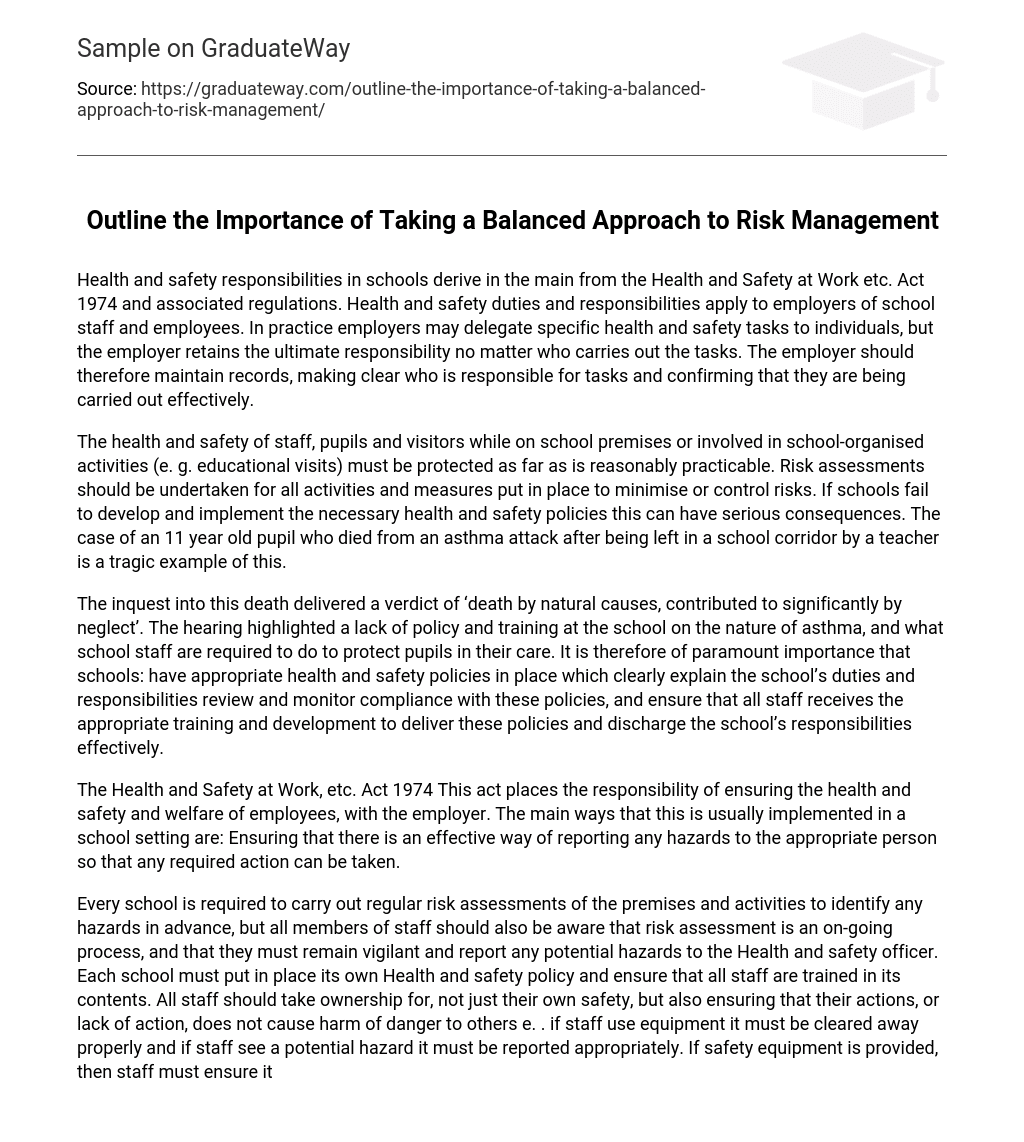The Health and Safety at Work etc. Act 1974 and related regulations are the primary sources of health and safety responsibilities in schools, applying to both employers and employees. While individuals may be assigned specific tasks, the employer is always ultimately responsible. Maintaining records that indicate task accountability and effective implementation is crucial for the employer.
Protecting the well-being and safety of staff, students, and visitors is a paramount concern for the school, whether it be on-site activities or educational trips. It is crucial to assess risks associated with all activities and take steps to minimize or address them. Failing to establish and enforce adequate health and safety policies can have serious consequences. The unfortunate death of an 11-year-old student who suffered from an asthma attack while unsupervised in a school hallway serves as a tragic example of this.
The inquest found that the death was due to “natural causes, with neglect being a significant factor”. The investigation discovered a lack of sufficient guidelines and training at the school concerning asthma and student safety. As a result, it is vital for schools to establish comprehensive health and safety policies that clearly define their obligations. It is essential to consistently assess and monitor compliance with these policies, as well as provide adequate training for staff members, in order to effectively fulfill these responsibilities.
Under the Health and Safety at Work, etc. Act 1974, employers have a duty to safeguard the well-being, safety, and welfare of their employees. In educational institutions like schools, this obligation can be fulfilled by setting up an effective reporting mechanism for identifying hazards and promptly addressing them.
Every school must regularly assess the risks of their premises and activities to identify potential hazards in advance. However, all staff members should also acknowledge that risk assessment is an ongoing process and they need to stay alert and notify the Health and Safety officer of any potential hazards. Each school needs to establish its own Health and Safety policy and ensure that all staff receive proper training on its contents.
All staff members are responsible for prioritizing their own safety as well as preventing harm or danger to others through their actions or lack thereof. For instance, if staff members use equipment, they should properly clear it away afterwards. Similarly, if they come across a possible hazard, they should report it appropriately.
If safety equipment is provided, such as gloves for handling hazardous materials in a science lab, staff members must always wear them. All school equipment must comply with recognized safety standards which can be confirmed by checking for one of these safety symbols: The Kite mark signifies that the product has been tested and meets the appropriate British Standard.





